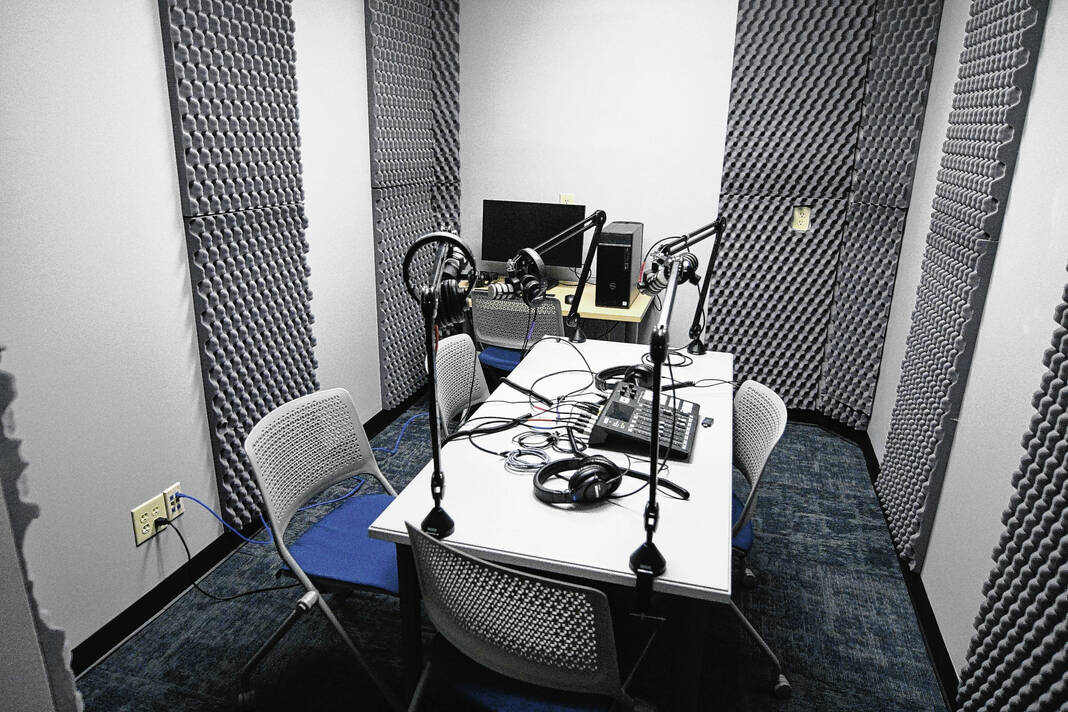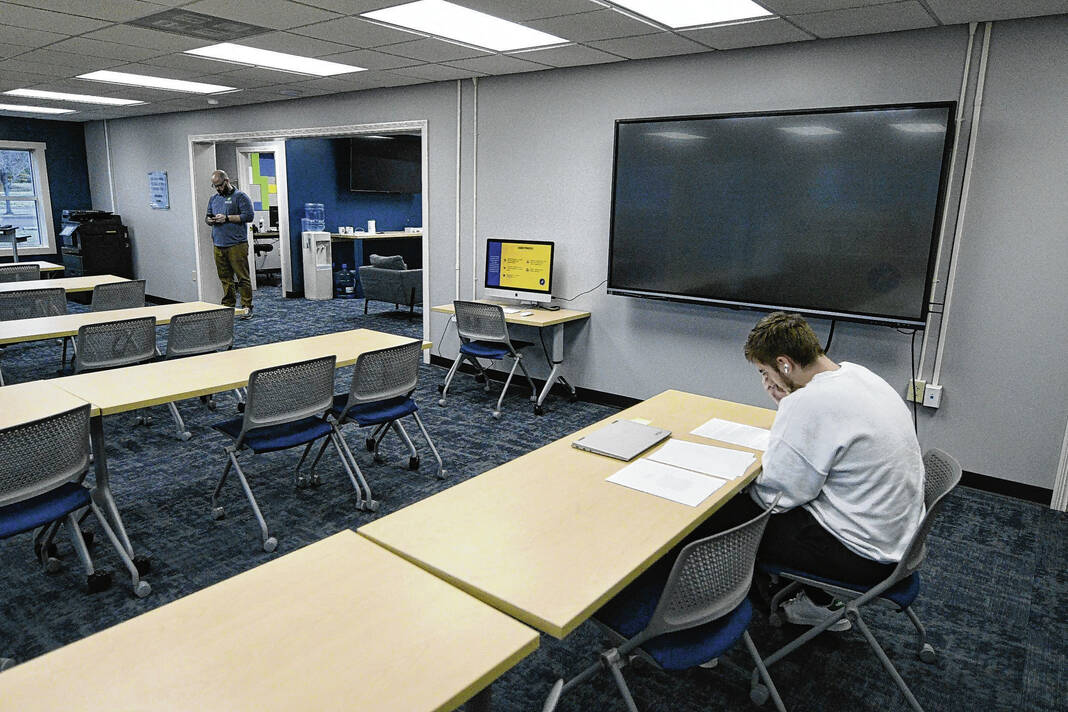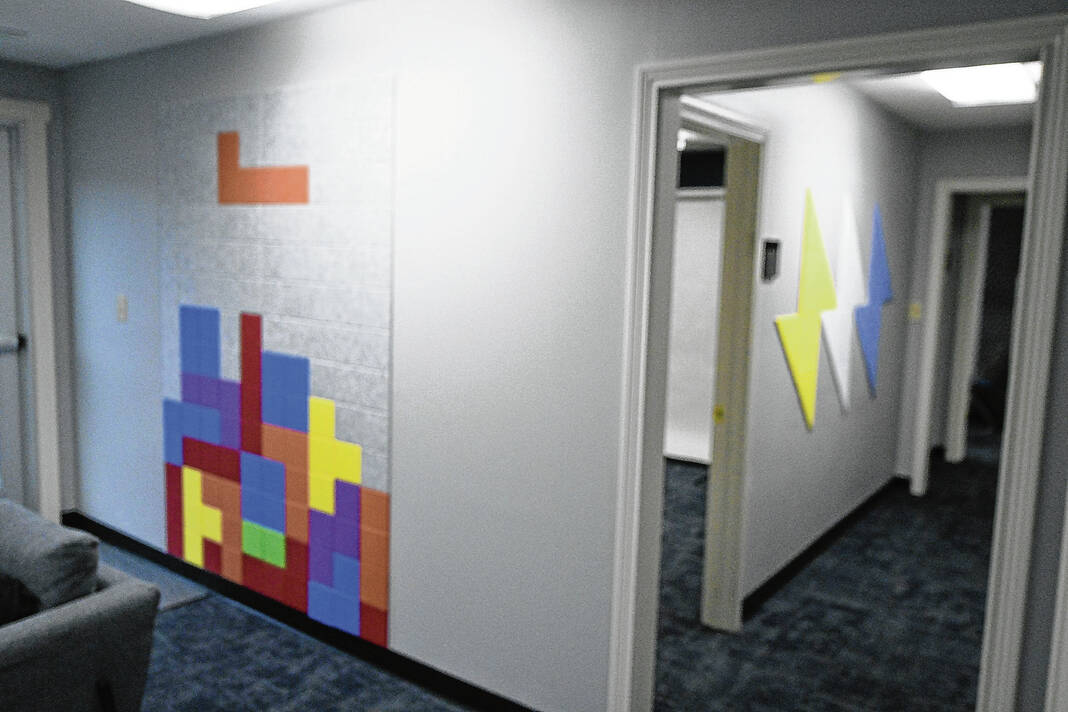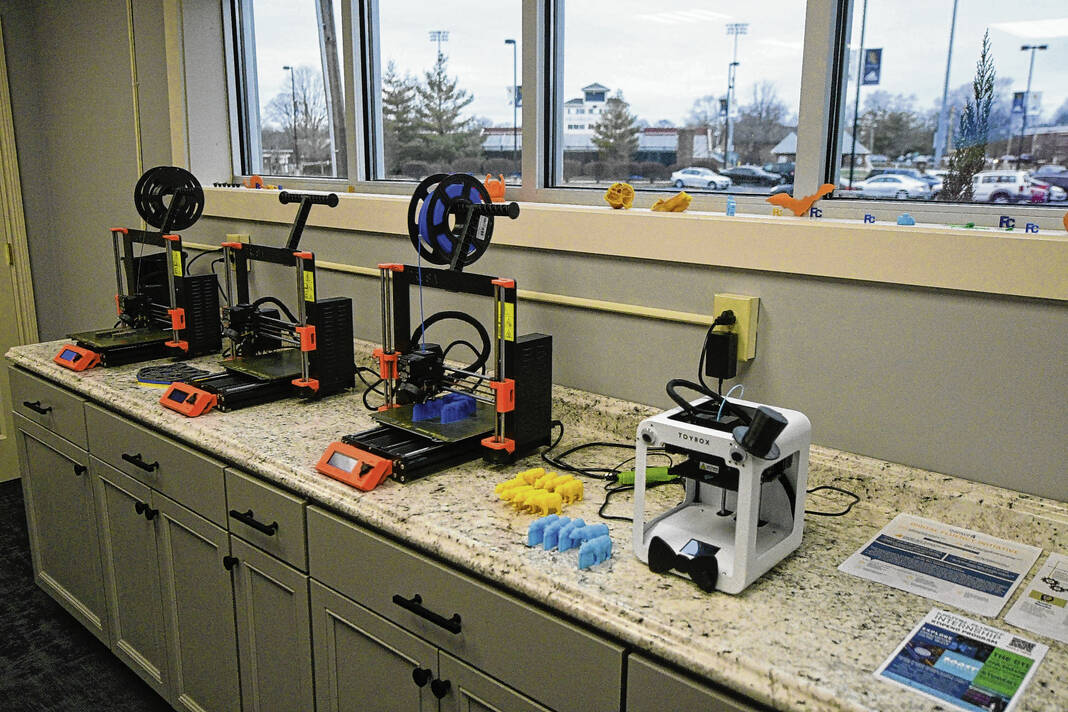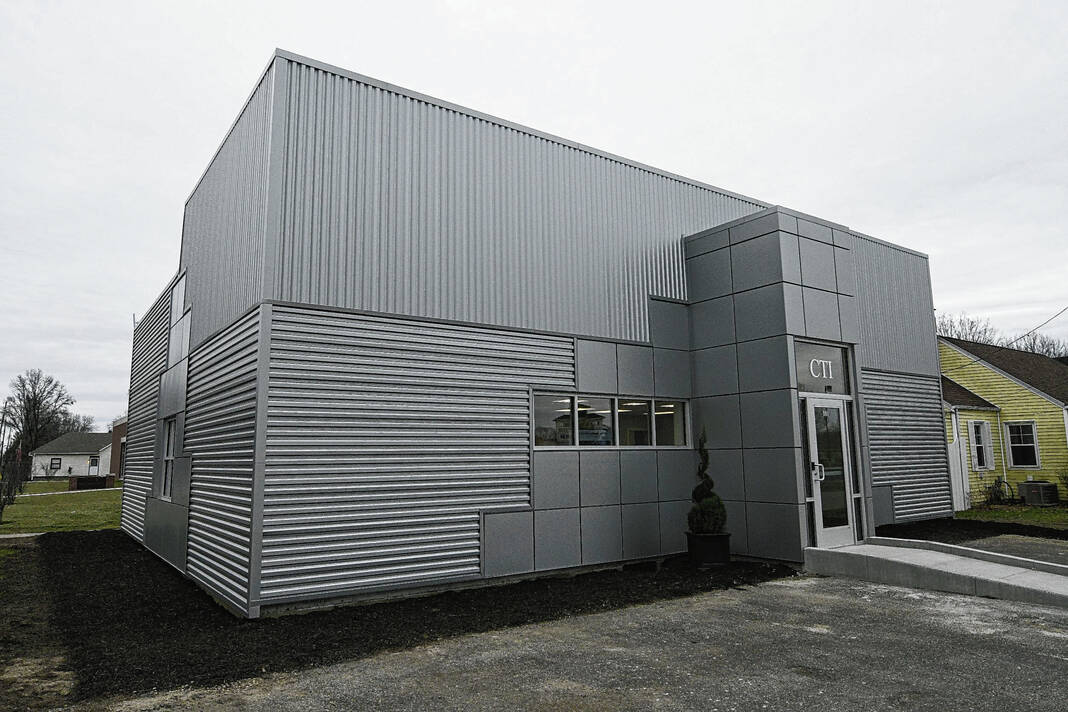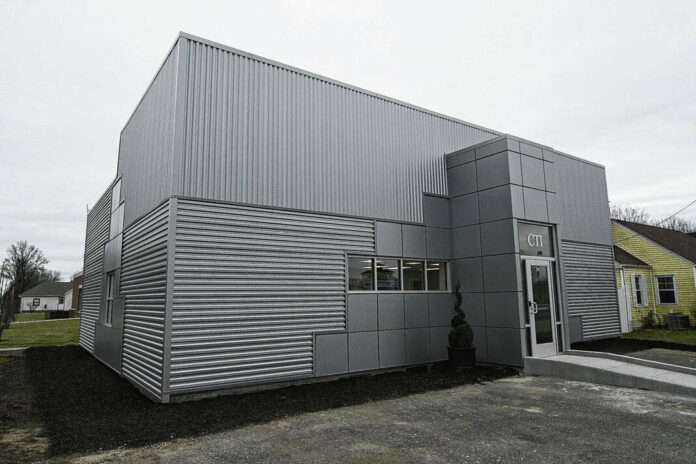
Franklin College’s Center for Tech Innovations reopened to students in January after $200,000 in renovations. College officials marked the reopening with a ribbon cutting Friday.
ANDY BELL-BALTACI | DAILY JOURNAL
Franklin College officials cut the ribbon on a redesigned Center for Tech Innovation Friday, marking the completion of about $200,000 in renovations to the building’s exterior.
The college’s former athletic annex, located at 901 Park Ave., underwent $400,000 in renovations to reopen as the Center for Tech Innovation, or CTI, in Fall 2021. The Center, which includes virtual reality headsets, 3D printers, a sound studio, a video studio and a digital maker space, closed again in March 2022 so the outside of the building could be rebuilt. This time, it’s reopened for good.
With the renovations, the CTI now has a modern metallic grey exterior, with a hybrid of ridges, squares and windows covering the outside walls. A $200,000 gift from Rob and Ruth Brown covered the cost of the renovations, which help the outside of the building match the tech-focused interior, Franklin College President Kerry Prather said.
“The exterior of the building was redesigned and renovated to reflect the kind of creative, innovative work that goes on inside there,” he said. “At first glance, it doesn’t look like any other building on campus. It looks very modern age. We wanted that to be a statement on this iteration of education being added, a foundation we provide to students irrespective of their academic goals.”
Before the CTI first opened, students in certain fields of study had access to podcasting and video recording equipment, but the center is unique in the fact it’s open to all students, said Andrew Rosner, Franklin College’s director of digital fluency.
“Students have creative ways to utilize the equipment. They are recording lyrics for their own music, we had the faculty utilize the equipment for an art installation that relied heavily on audio recordings,” Rosner said. “We also have students recording videos, utilizing equipment for voiceovers. It’s quite a range of projects in the studio.”
Students were able to use equipment in the college’s Dietz Center while the exterior renovations took place, but they had to share the space with the offices of career development and professional development. With the CTI reopening at the start of the spring semester, students have been able to benefit from having their own space where they can learn and create, Rosner said.
With the virtual reality headsets students have been able to enter a virtual work experience, where they can simulate what it’s like working with companies such as Citibank by completing tasks that take anywhere from two to six hours, he said.
Collin Sanders, a sophomore studying graphic design, said he uses the CTI’s Mac computers to create and print out designs for his coursework. He’s also a fan of the virtual reality headsets, where he’s toured outer space and different parts of the United States. The headsets have also helped him learn different perspectives, Sanders said.
“One of them is traveling through America while Black as part of Black history. It has people sitting, talking in a booth and it’s like you’re having a conversation. There’s also one with Anne Frank where you can see her house and her experience,” Sanders said.
Cody Bond, a junior double-majoring in computer science and software engineering, hasn’t printed anything in 3D so far, but has friends who used the Prusa i3 MK3S+ printers to produce miniature dragons and bears. Bond himself has used knowledge he’s gained from his studies to troubleshoot issues with the virtual reality headsets and 3D printers, Bond said.
“Because of how important digital fluency is, (it helps) getting to look at all the things in use if something goes wrong,” he said. “Solving them is important because we’re getting further and further into a tech-advanced world.”
The CTI is a great place for students to explore their creative side and be productive, Sanders said.
“I think it’s a great way for students to come in and either interact with other students through technology or virtual reality headsets and it’s a great place to come in and work,” he said. “It helps me focus, rather than being at a dorm with distractions.”
The center helps establish Franklin College as a technologically-advanced institution, Prather said.
“I think among small colleges in Indiana, we’re on the very front edge of embedding digital proficiency into the essence of a liberal arts education,” he said. “We have made the commitment that every student’s experience here will include the opportunity to become digitally fluent in the platforms and applications that are most commonly in use and most helpful to their particular academic major and goals.”


